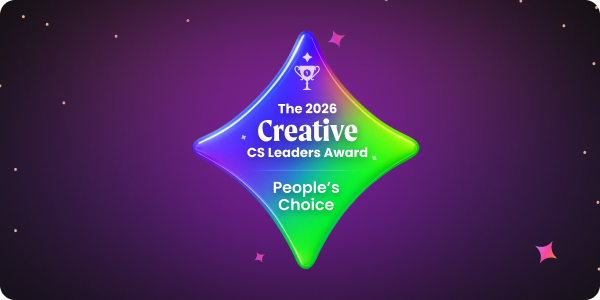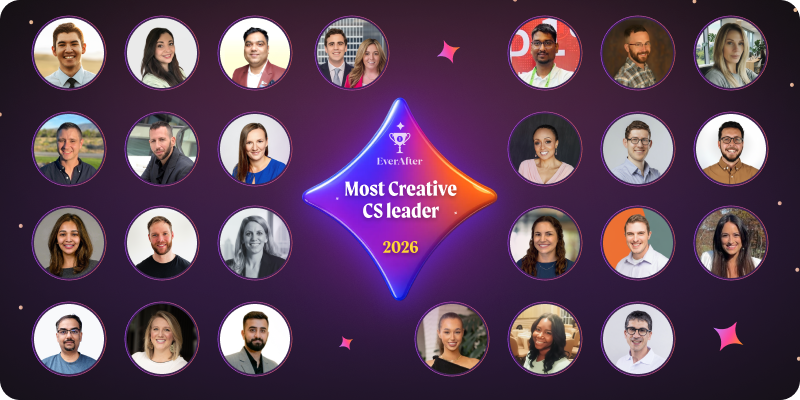Master customer success excellence with innovative approaches and proven methodologies. Discover advanced frameworks, strategic insights, and implementation techniques that increase customer satisfaction by 55% and accelerate business performance.
Hear from Ziv Peled, the Chief Customer Officer at AppsFlyer and a known customer success leader on how they were able to execute a tier-based customer hub experience for more than 15,000 accounts
We’ve been building customer success in AppsFlyer since 2013, ever since the days when we only had one office in Israel. At some point we recognized the need to be closer to our customers, as close as possible. So we started to grow the business units. China and Bangkok, and then the US. As we grew, we opened more offices, and more customer success departments. It was clear from the very beginning that customer success must grow in a high-rate in order to keep the level of service high.
Ziv explains the evolution of the CSM role: “at the beginning we expected the CSM to be superhuman, to do everything, to know everything, even to sell. Today its definitely different. It becomes more and more about specialization”.
{{cta-scale-2}}
What prompt you to look for a solution
“At some point you understand that there's a need to have some kind of a playground that is shared between the customer and the vendor”. Ziv shares how the team at AppsFlyer did an initial POC with building that mutual playground, using Google Sites which was a fully manual process that included copy-pasting content for each customer’s site, not being able to connect it to any data source. “Even though it was very manual and very basic, it was a good practice because we definitely understood what was missing, what was needed. While the initial intention was to find a way to serve smaller accounts, but with time they understood that building a hub that answers different needs of Enterprise, and then one for SMBs, and one for basically each customer-tier, can make a very big impact”.
Embedding EverAfter inside AppsFlyer
“I think it has to live inside the product. it's a no-brainer. It's part of the product. When I think about customer support and customer success, I think that they are part of the product. So the same goes here for the hub”.
.avif)
The content of the hub
“I think what's really great, that we couldn't achieve in Google Sites, is that we can personalize everything about the hub, and put anything that we want on it, super easily.
In the end, definitely at our scale, you are looking for products that are easy to use. And then, for me to be able to say: ‘let’s show our customers, their open tickets’, just as an example. That's remarkable and sounds like a very basic feature, but try to do that within your product…”
“You can do really cool things like embedding Gong recordings, webinar recordings, including individual tasks. This is something that in the end, might be the biggest pain between the customer and a vendor.
Buy vs. build
“Your engineering team can tell you, ‘oh yeah, we'll be able to achieve that within three, six months’ And then it doesn't take three or six months. And then you’re kind of stuck”.
“That's one of the things that we hear most often, the kind of build versus buy situation, because it sounds like it's super easy to, you know, have the support tickets inside your product and connect it to Salesforce and connect it to, like, each one of these integrations take a very long time and to do it in a way that is appealing from the customer's perspective”.
Creating segmented flows
Ziv Peled, the Chief Customer Officer at AppsFlyer, discussed the importance of creating segmented flows for their customers. As AppsFlyer operates in multiple markets, personalization is crucial, and each market works differently. The company needed to create a way for teams to decide what they need and what they do for each account, allowing for segmenting the journey and including the country.
Ziv further explains the importance of segmenting by tiers: “ I think about enterprise customers as an example. In this type of relationship, its key to get to a deep level of understanding of the needs of the customer, the goals, maybe even the challenges. If I know that my customer is trying to achieve 5 million profit over the 3 million of last year, then I can offer some suggestions and go to different directions. In order to help that customer reach that specific goal. You can’t do that deeply for each customer, without the technology”.
The team behind the hub management
"CS Ops is the buyer of the solution, and has worked closely with CSMs to define what is needed. In time, CSMs got the keys to build their own views and decide which customers are getting on board”.
“When I look at the teams, there's always a champion or two that are the heavy users, I'll say the technological driver of it. Even though its not such a sophisticated technology to build with, you need to operate it. So naturally it comes with certain passion”.
“We have 18 teams operating in around 39 markets, across 7 tiers, so definitely operating in a large scale”.
“I think first of all, because we work in many markets, we must personalize the experience because each market works differently. There's a way we work with small customers in China that doesn't work for small customers in other places, and vice versa in other countries. We definitely need to let the teams decide what they need and what they do, especially since the needs of long tail and SMB customers can vary significantly”.
.avif)
Tier based segmentation
“The ability to select which accounts get the hub, segment the journey, and include the country has been working since the early days. As we grow, we are looking into even more dimensions and what we can do. When we look at our enterprise customers, we are managing many relationships, some of which are very close. We are working with them every day, and they are getting value from the hub. While not all teams are using it, it's critical for personalization when showing content to specific individuals or teams.
On the scale user side, customers are supported from milestone to milestone, and we do that on a one-to-many basis. The enterprise user, on the other hand, needs more time to dive deeper into understanding their customers and take them to the next level. For them to perceive us as the growth partner, we need time, and we need tools that enable us to have more time.
Customers want to know who their CSM is, who their account manager is, and what package they are getting. Pulling data from Salesforce allows all hubs to include the relevant content per account, such as who's managing the account, so the information each customer sees isn't manually placed by the CSM.
.avif)
The outcomes of using EverAfter
“For many years we grew aggressively. Even before this financial crisis and before Covid, we understood that we cannot continue to grow in the same numbers. Even if we can finance it, it's not something that we want to do. Operational excellence is a term that is coming back now, this year with the financial crisis. We decided to do a service level at the end of 2019. We cannot accomplish that without having the technology to support it. We are now supporting Long Tail and SMB with around 40 people.
Bottom line, it enables me to invest a lot of my resources in enterprise. Not to say that the SMB or long tail is not important, but in the end, that's how companies develop over time and grow. They grow on enterprise customers. At the same time, we need to invest in our SMB customers because they're going to be our enterprise customers in two, three years.
“ The team that will win in SMB is the team that will be able to be hybrid in one-to-many and one-to-one in mind and will be able to invest in customers.
{{cta-gong}}
“Most of the things that the systems are doing in the hub are on the automation side. It's focused on one-to-many customers. The rest is more manual, such as knowing which customers are at risk and which customers need attention”.


.avif)

.png)

.png)




%20(1).png)
















.png)
.png)
.png)



.avif)





.png)
.png)







